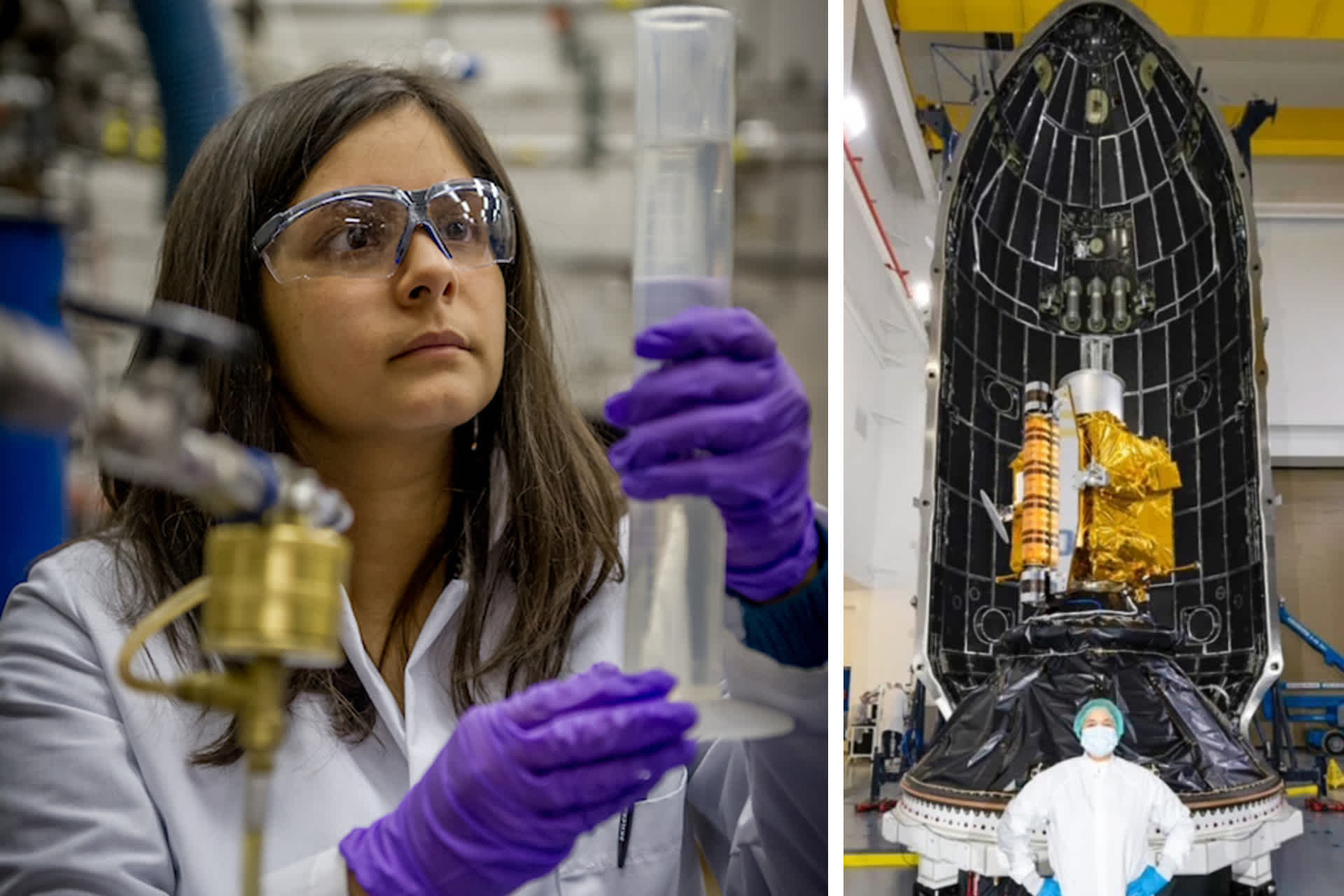Real Talk with Joan Melendez Misner

Joan Melendez Misner is an aerospace integration engineer at NASA. She wants everyone to have a chance to be exposed to science. As a part-time science communicator, she says that it’s her job to get people excited about her field and NASA’s projects. So she makes fun videos and posts them on TikTok and Instagram. The videos explain her projects and provide information on engineering, science, and geology.
When Melendez Misner was applying to work at NASA, she was rejected 13 times before finally being accepted. “As cliché as it sounds,” she says, “never give up. No doesn’t mean ‘never.’ It just means you have to keep going.”
Read part of my conversation with Melendez Misner below.
TFK Kid Reporter Orlie Weitzman:
Can you tell me a little bit about your job? What does being an aerospace integration engineer involve, and how did you get to that position?
Joan Melendez Misner:
The simplest way to put what I do—because it’s a little complicated sometimes—is to say that I help write requirements. And I help test those requirements against what I write. So let’s say you’re building a house. You talk to a developer and say, “I want the house to be this size; I want this number of rooms.” That’s what I do: I write those requirements for the spacecraft and the rocket, or the launch vehicle.
I also do the testing. At the end of the day, what we want to do is separate that spacecraft from the rocket and ensure that it heads to where it’s supposed to go, whether it's going to be orbiting our planet, going to other planets, going into the sun . . . My job is to ensure that the spacecraft separates correctly from the rocket and then goes along on its mission.

Orlie:
Did it take you a long time to learn how to do that?
Melendez Misner:
I started at NASA during the pandemic, so it was a little weird. Normally, when you start a job, you start to get to know your team. You get to tour around. You get to shadow other engineers and get a sense of what you're doing. But because I started during the pandemic, I didn't have that opportunity. So I had to learn a little bit differently and more independently.
But the really good thing about any kind of engineering job, specifically at NASA, is they teach you what you’re going to do. They usually put you with a mentor, and you have the opportunity to ask questions. And even though it wasn’t face-to-face, I got to talk to them.
To get to where I am, I worked in aviation for about eight years. I was a test engineer and a fuels engineer for NAVAIR, Naval Air Systems Command. Now I’m kind of doing what I did there, but on a different scale. Before, I used to work on jets and jet engines. Now I'm working on rockets and spacecraft. The principles and the concepts are very similar.

Orlie:
Why did you decide to make that switch?
Melendez Misner:
As a young girl, I looked at the stars. I’d always be fascinated by what was out in outer space. I wanted to go to space one day, so I knew that I was going to go into the space industry at some point.
In 2019, I got to watch the SpaceX Falcon 9 rocket tests. And I got to be a part of the NASA Social, which is a really cool thing where NASA brings social-media people to come in, tour the facilities, and talk to NASA engineers. After I watched that rocket launch—and being so close and feeling that vibration—that’s when I immediately was like, “You know what? I think it’s that time.”
Orlie:
The second part of your job is to be a science communicator. Can you explain what that means?
Melendez Misner:
Engineers need amazing science communicators to break it all down for people who are not in the sciences or engineering world and want to understand what the mission is about. I started doing this on the side, during the pandemic. I used social media. I started looking at science communicators that I really admire, like Emily Calandrelli, who’s the Space Gal; Bill Nye; and Neil deGrasse Tyson. All of these people are super famous for communicating the cosmos and the wonders of the universe, but they do it in such a way that somebody who doesn’t really know about science or space can pick it up and get excited about it as well.

Orlie:
If you weren’t in this field, what do you think you might do?
Melendez Misner:
Not a lot of people know this, but before I wanted to become an engineer, I wanted to be a doctor. Growing up, I loved [the idea of] having the lab coat, having the stethoscope, being able to monitor people's hearts. I love helping people. And now I’m helping people in a different way.
This interview has been edited for length and clarity.

